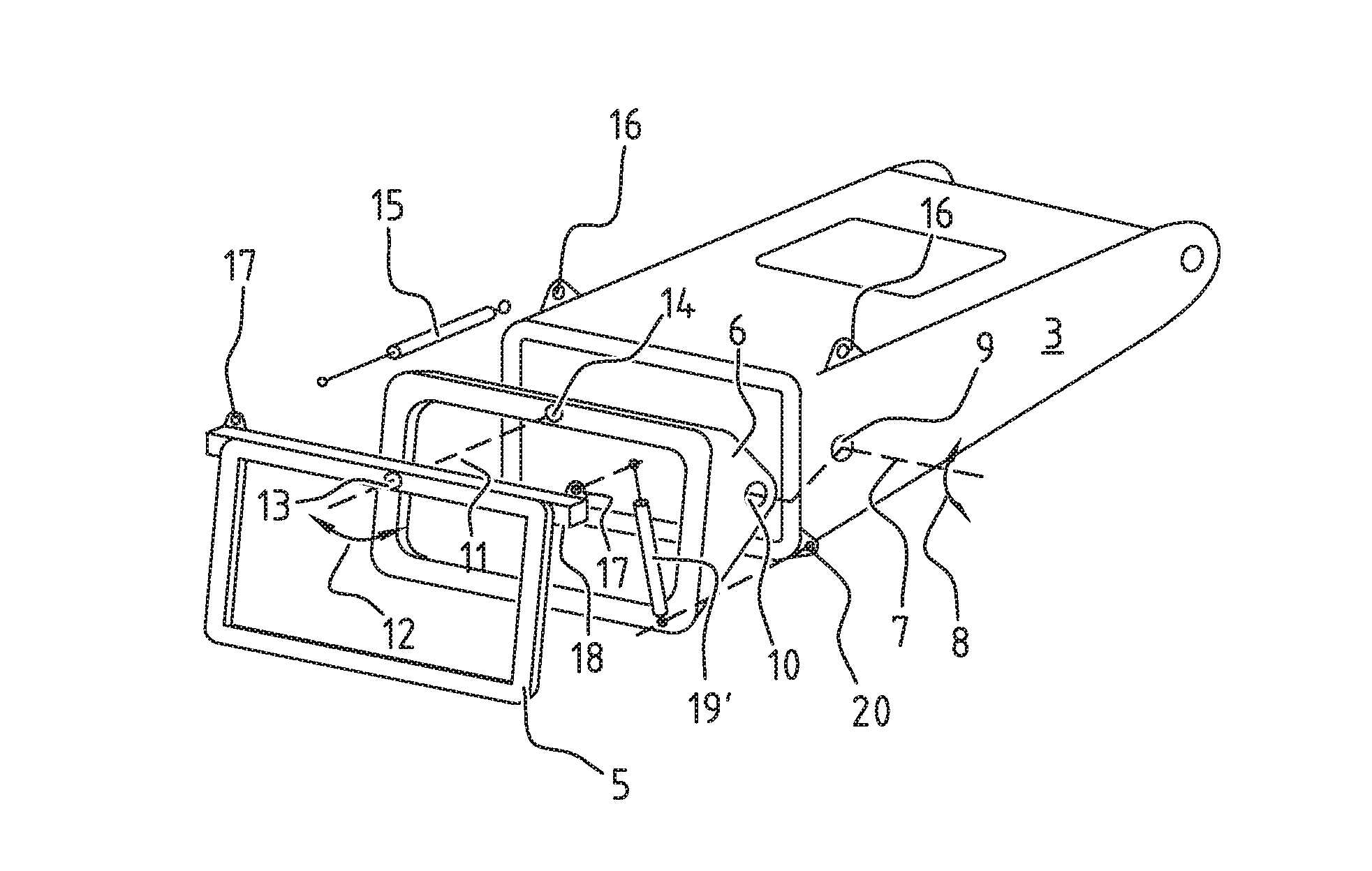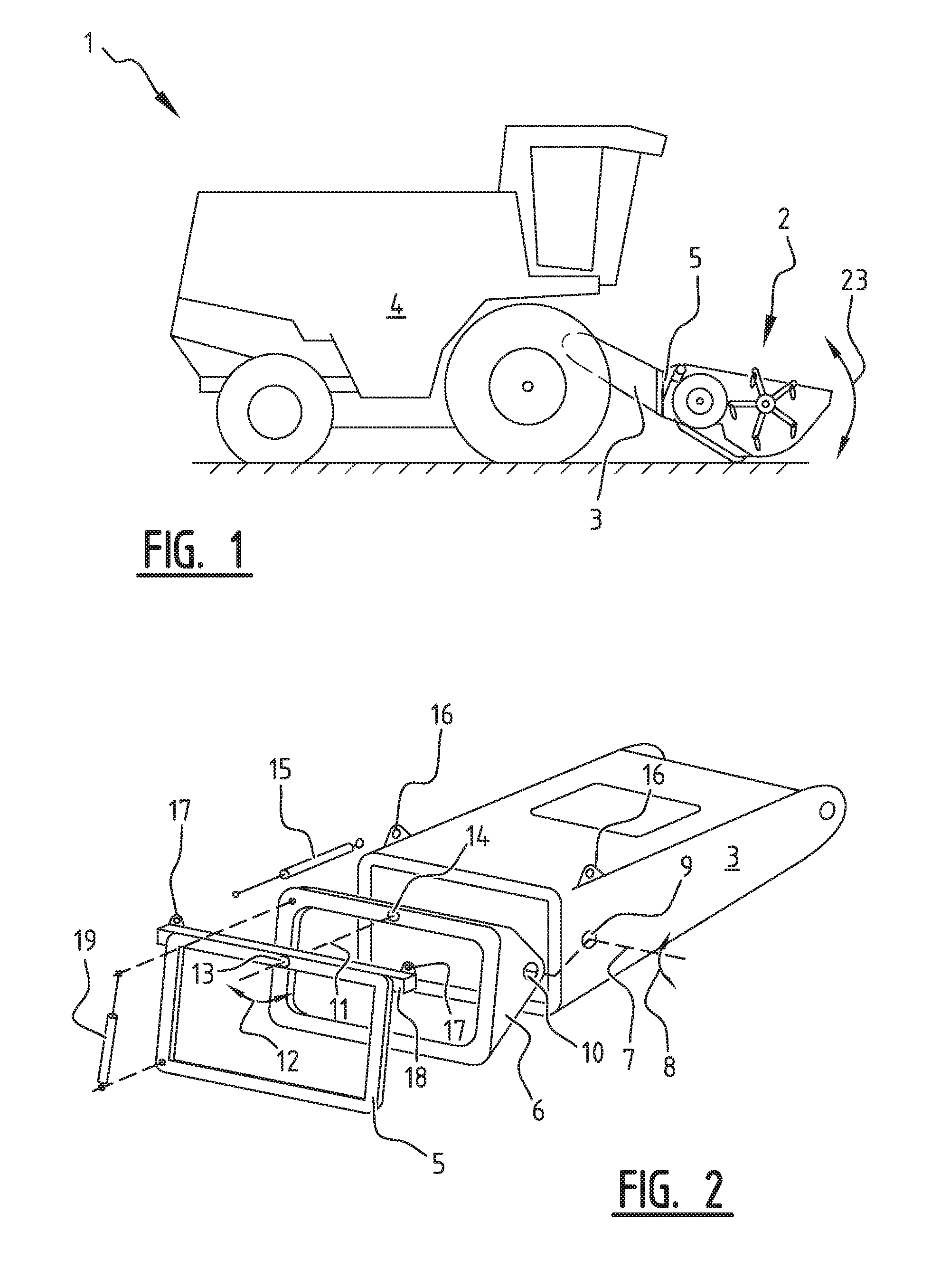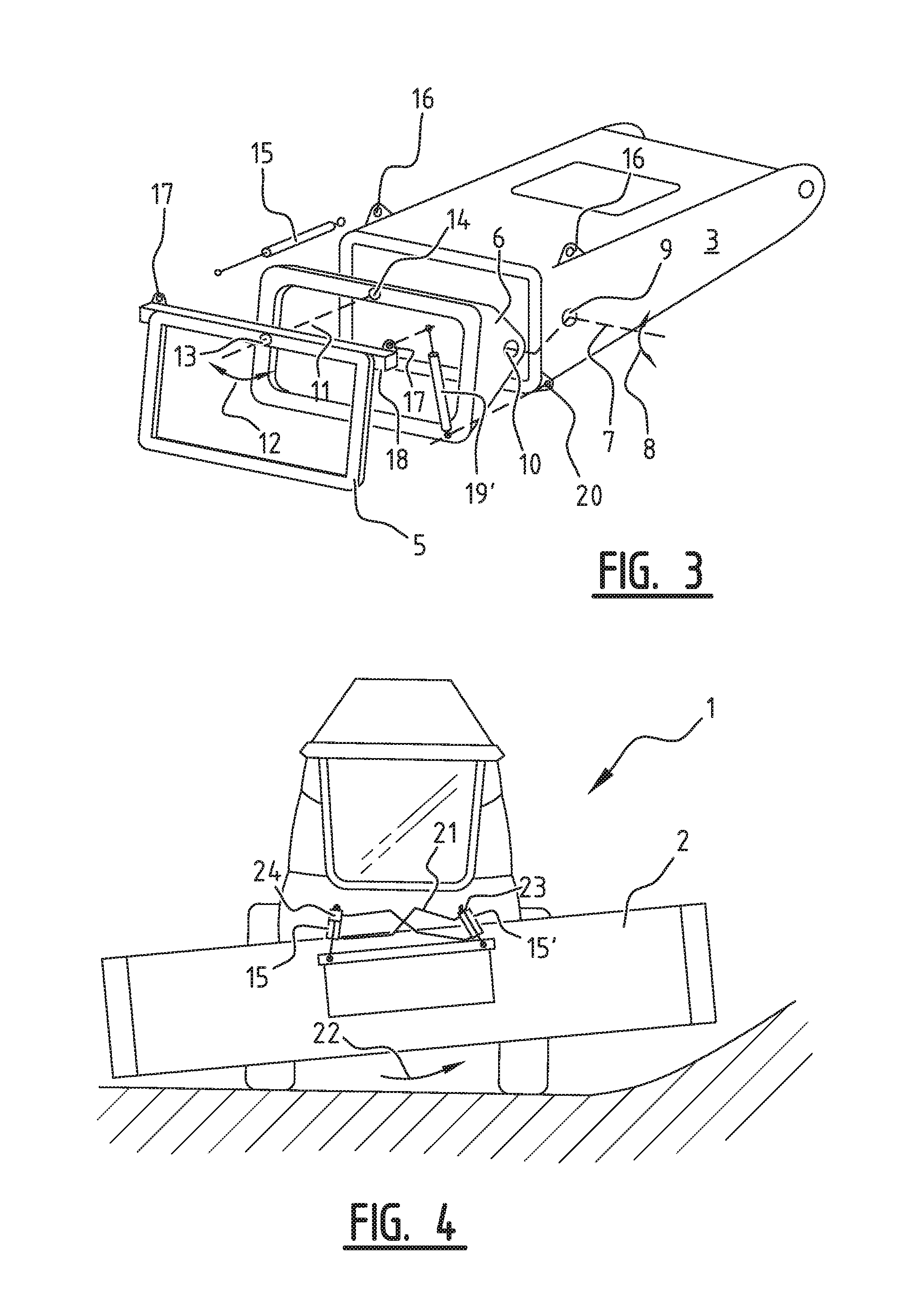Header Mounting Frame
a header and mounting frame technology, applied in agricultural machines, agricultural tools and machines, adjusting devices, etc., can solve the problems of inability to cross-couple and adversely affect the fore-aft actuator, and achieve the effect of facilitating the pivoting of the intermediate frame and facilitating the pivoting of the header mounting fram
- Summary
- Abstract
- Description
- Claims
- Application Information
AI Technical Summary
Benefits of technology
Problems solved by technology
Method used
Image
Examples
Embodiment Construction
[0022]FIG. 1 shows a side view of an agricultural harvester (or vehicle) 1, in accordance with an exemplary embodiment of the present invention. In operation, a header 2 is connected to the agricultural harvester 1. The agricultural harvester 1 comprises a feeder 3 which is connected to the header 2 via a header mounting frame 5 provided at the frontal end of the feeder 3, and is provided for taking in harvested crop material from the header 2 towards the body 4 of the agricultural harvester 1. The header 2 has to be positioned in a fore-aft position with respect to the agricultural vehicle 1. Thereby the fore-aft position defines the angle between the cutting knives of the header and the ground surface. Tests have shown that an ideal fore-aft position depends on the type of crop material to be harvested. Therefore, the fore-aft position is desirably adaptable. This is implemented by allowing the header mounting frame 5 to perform a fore-aft movement, which is indicated in FIG. 1 wi...
PUM
 Login to View More
Login to View More Abstract
Description
Claims
Application Information
 Login to View More
Login to View More - R&D
- Intellectual Property
- Life Sciences
- Materials
- Tech Scout
- Unparalleled Data Quality
- Higher Quality Content
- 60% Fewer Hallucinations
Browse by: Latest US Patents, China's latest patents, Technical Efficacy Thesaurus, Application Domain, Technology Topic, Popular Technical Reports.
© 2025 PatSnap. All rights reserved.Legal|Privacy policy|Modern Slavery Act Transparency Statement|Sitemap|About US| Contact US: help@patsnap.com



